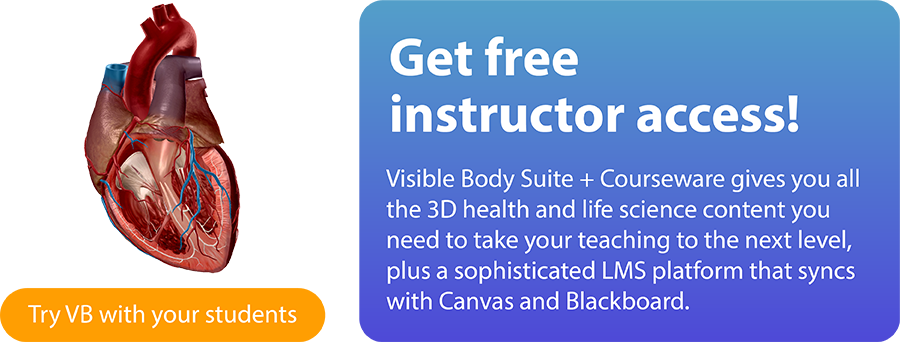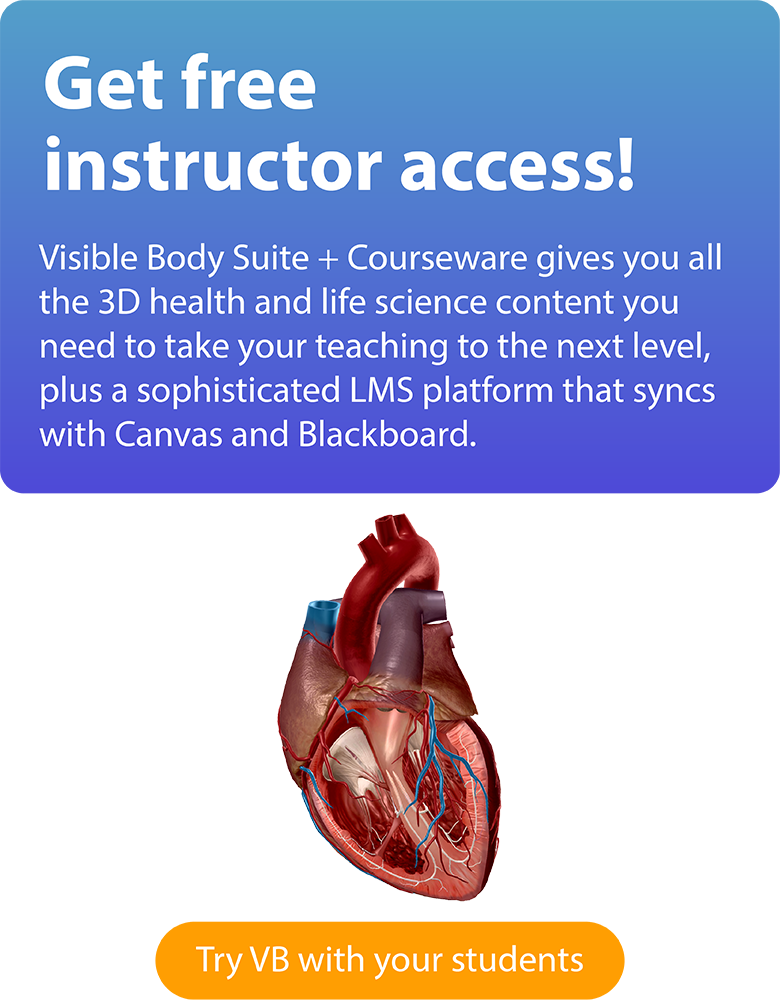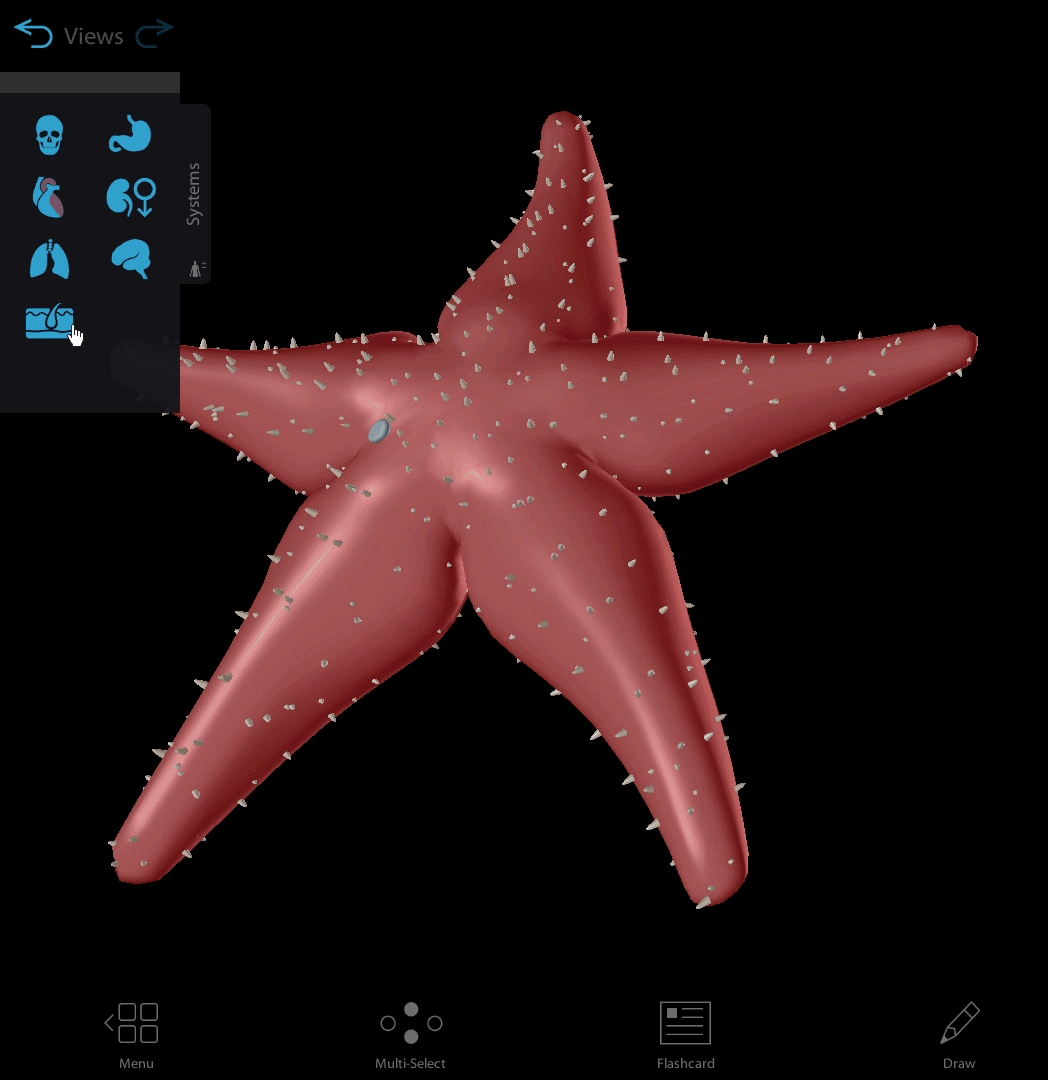Posted on 7/14/23 by Sarah Boudreau
Through learning about the differences and similarities between animals, biology students think critically about anatomical structures and what makes these animals suitable for their environments.


In this blog post, we’ll walk through a lesson plan that asks students to compare and contrast different animals using the four animal models in VB Suite: the earthworm, sea star, frog, and pig.

GIF of pig model in VB Suite.
With its 3D interactive, dissectible models, Visible Body Suite is definitely up to the task! The app makes it easy to explore internal anatomy with a couple clicks and zero prep or cleanup. VB Suite was built with learning in mind—clicking on a structure brings up a definition that gives students important information and context for the structures. Clicking the pronunciation button plays an audio clip of the name of the structure read aloud, giving students the confidence to use and discuss these terms out loud.
In the first step, students’ own interests and curiosity guide them through the models.
Venn diagram worksheets give students a focus as they explore. Through manipulating the different models, students will discover similarities and differences between the animals and structures.
This downloadable PDF contains three different Venn diagram worksheets you can print and use in your classroom!
Now students are ready to review the information they’ve discovered and learn more about these structures!
This is the perfect time to introduce a lecture that brings together and expands upon ideas your students have just explored.
With Tours, you and your students can get more out of lectures! Tours are a series of shared Views—think of them like a 3D slideshow where you can manipulate the models on each “slide.”

GIF from VB Suite.
Using Tours, give your students an overview of the anatomy in each animal model. When students have questions, you can manipulate the models to illustrate answers! Additionally, you can move through different body systems with ease using the systems tray.

GIF from VB Suite.
After the lecture, students will be prepared to work through labs! In addition to virtual animal dissection labs, the education team at Visible Body has several lab manuals and lesson plans for comparing the nervous, respiratory, circulatory, and digestive systems of the different animal models.
Not only do these premade labs save instructors time, but they also feature correlations to state and national science standards, so you know you’ve got your bases covered.
Let's engage students in a different way with a fun classroom competition where students use their newfound knowledge and their debate skills to decide which of the four animals is the G.O.A.T—the greatest of all time.
Of course, there is no objective “greatest” animal, but students will enjoy having a team to root for and getting creative as they make their arguments.
Split the class into four groups—for larger classrooms, you may need to break things up further and get a little creative. Each team will represent one of the animal models, and they should be given time to prepare their cases and use VB Suite to review their animal and get a look at the competition.
Students should consider:
Start with the sea star and earthworm teams, and after the coolest invertebrate wins, move on to the pig and frog. The other, noncompeting teams will vote on which team won their debate.
Then, the winning invertebrate and winning vertebrate’s teams will go head-to-head to decide which animal is crowned the G.O.A.T!
This is a fun way to get students engaged and working together as a team. This form of debate also appeals to learning standards and higher order thinking as students use verbal, argumentative, and analytical skills!
Want more ideas for the biology classroom? VB Suite has even more features to explore, including Flashcards and interactive dissection quizzes to help students review what they’ve learned!
For more lesson plans, check out these blog posts:
Be sure to subscribe to the Visible Body Blog for more anatomy awesomeness!
Are you an instructor? We have award-winning 3D products and resources for your anatomy and physiology course! Learn more here.
When you select "Subscribe" you will start receiving our email newsletter. Use the links at the bottom of any email to manage the type of emails you receive or to unsubscribe. See our privacy policy for additional details.
©2026 Visible Body, a division of Cengage Learning